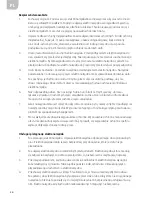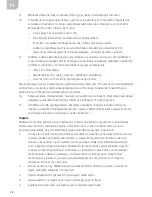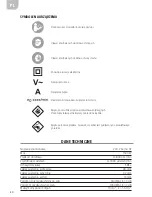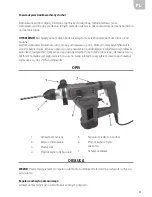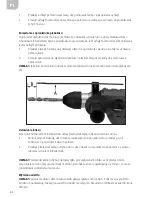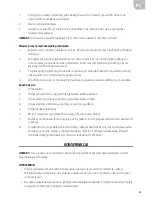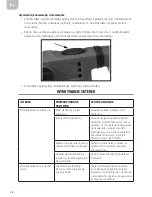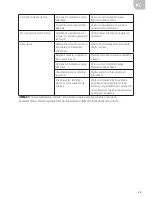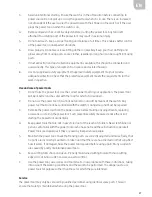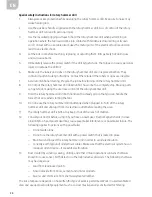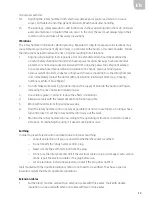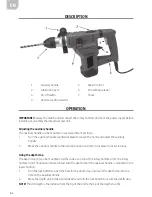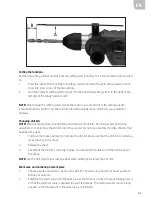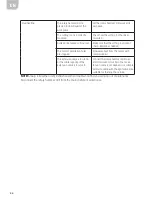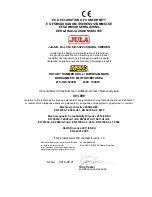
EN
40
2.
The longer the distance between the electrical socket and the tool, the greater the cable
capacity needed for the extension cable. Extension cables with incorrect cable capacity
provide too little voltage, resulting in lower output and potential damage to the tool. (See
table A.)
3.
The lower the number, the greater the cable capacity. E.g. a cable with No. 14 can handle
greater current than a cable with No. 16. (See table A.)
4.
All cables must have at least the requisite cable capacity, if more than one extension cable is
used. (See table A.)
5.
Add the current strengths found on the rating plates if the extension cable is used with more
than one tool and decide the minimum cable capacity based on the sum. (See table A.)
6.
Make sure that the extension cable is suitable for outdoor use if the job is to be done
outdoors.
7.
Make sure that the extension cable is correctly connected and free from defects. Replace
damaged extension cables or get an electrician to repair them prior to use.
8.
Protect the extension cables from sharp objects, excessive heat, and damp or wet areas.
SYMBOLS ON THE MACHINE
Please read these instructions before use.
Use approved safety goggles.
Use approved ear protection.
Double-insulated.
Alternating current.
Current strength.
Unloaded rpm.
Risk of fire. Do not cover ventilation holes.
Keep combustible objects at a safe distance from the tool.

